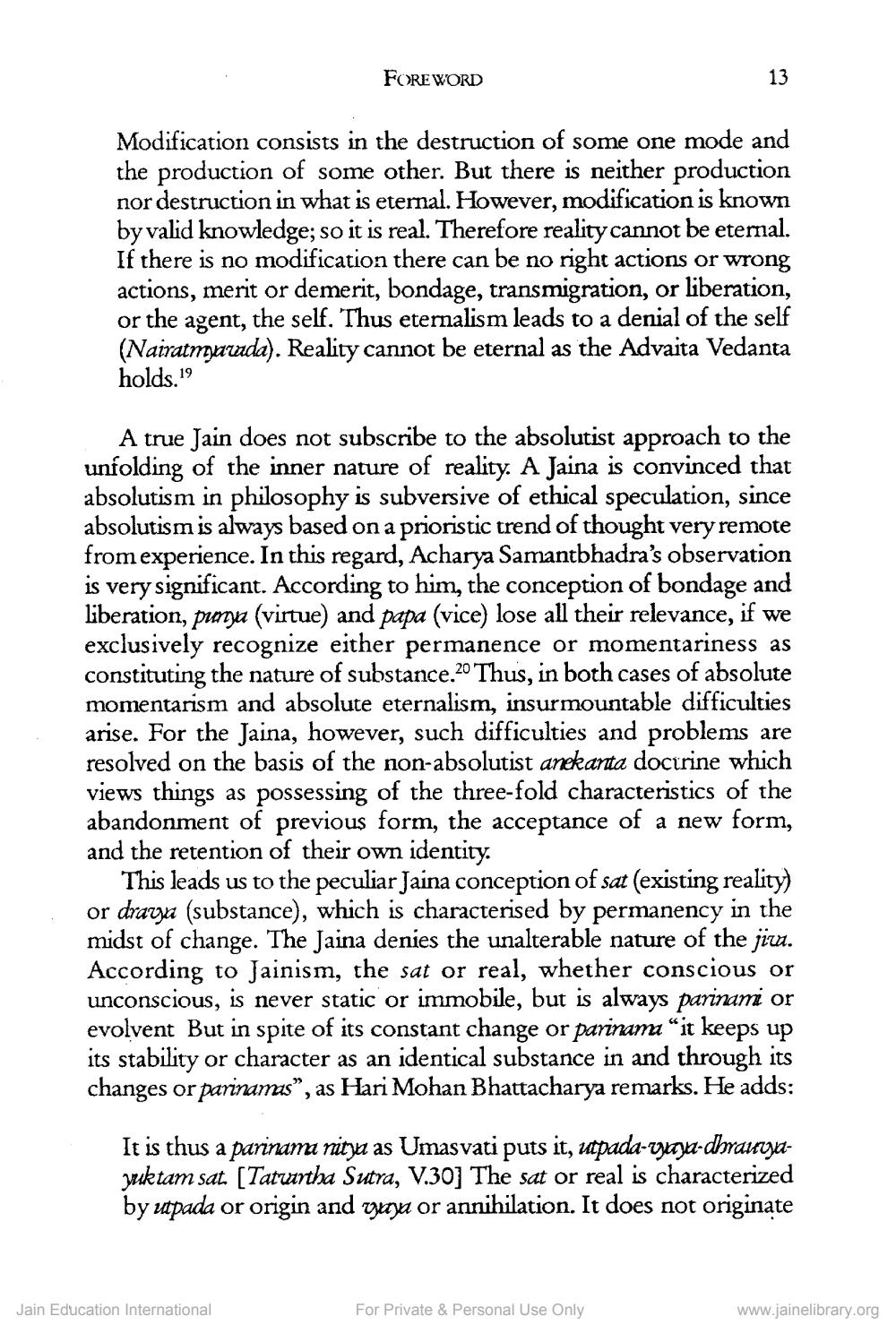________________
FOREWORD
Modification consists in the destruction of some one mode and the production of some other. But there is neither production nor destruction in what is eternal. However, modification is known by valid knowledge; so it is real. Therefore reality cannot be eternal. If there is no modification there can be no right actions or wrong actions, merit or demerit, bondage, transmigration, or liberation, or the agent, the self. Thus eternalism leads to a denial of the self (Nairatmarada). Reality cannot be eternal as the Advaita Vedanta holds.19
A true Jain does not subscribe to the absolutist approach to the unfolding of the inner nature of reality. A Jaina is convinced that absolutism in philosophy is subversive of ethical speculation, since absolutism is always based on a prioristic trend of thought very remote from experience. In this regard, Acharya Samantbhadra's observation is very significant. According to him, the conception of bondage and liberation, proza (virtue) and papa (vice) lose all their relevance, if we exclusively recognize either permanence or momentariness as constituting the nature of substance.20 Thus, in both cases of absolute momentarism and absolute eternalism, insurmountable difficulties arise. For the Jaina, however, such difficulties and problems are resolved on the basis of the non-absolutist anekarta doctrine which views things as possessing of the three-fold characteristics of the abandonment of previous form, the acceptance of a new form, and the retention of their own identity.
This leads us to the peculiar Jaina conception of sat (existing reality) or drazza (substance), which is characterised by permanency in the midst of change. The Jaina denies the unalterable nature of the jira. According to Jainism, the sat or real, whether conscious or unconscious, is never static or immobile, but is always parinami or evolvent But in spite of its constant change or parinama "it keeps up its stability or character as an identical substance in and through its changes or parinamas”, as Hari Mohan Bhattacharya remarks. He adds:
It is thus a parinama nitya as Umasvati puts it, utpada-gaya-dhraugayruktam sat [Tatuartha Sutra, V.30] The sat or real is characterized by uapada or origin and yaya or annihilation. It does not originate
Jain Education International
For Private & Personal Use Only
www.jainelibrary.org




